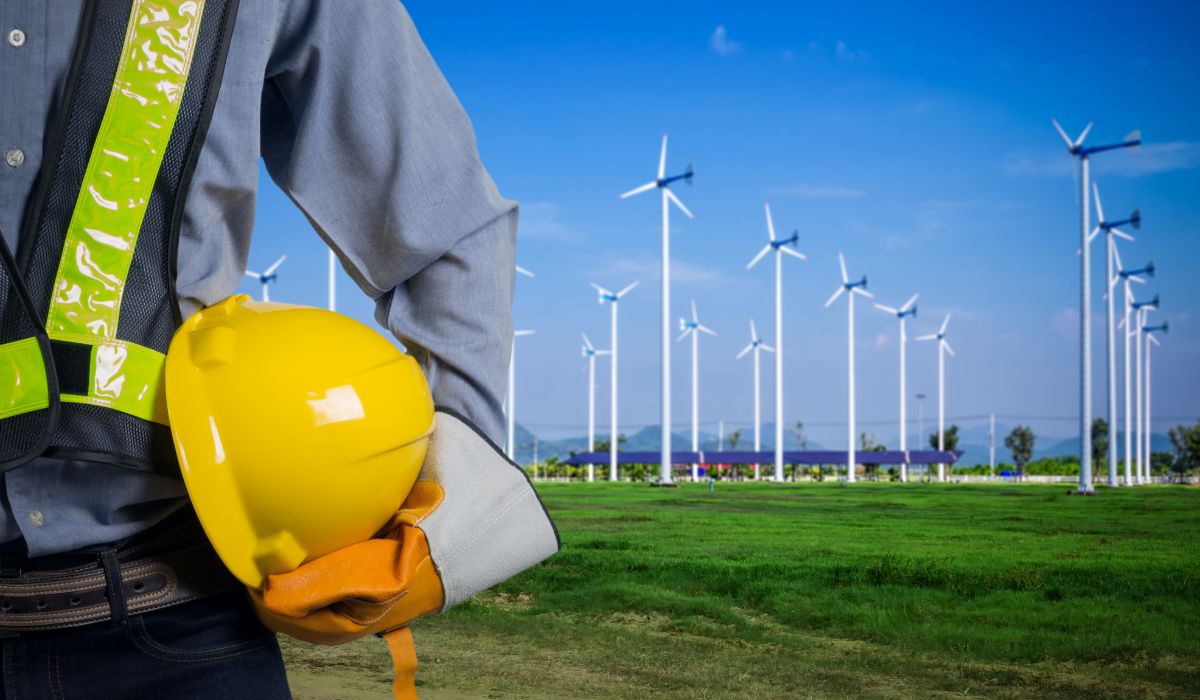Renewable Energy on Farms: Eco-Friendly Power Solutions

Farming’s future is getting a green makeover with renewable energy. Imagine fields of crops swaying next to rows of solar panels or wind turbines. This isn’t just a pretty picture; it’s a real shift towards eco-friendly power on farms. By turning to renewable sources, farmers are cutting down on pollution and energy costs. This change is more than just good for the environment; it’s smart business too.
Harnessing the Sun: Solar Energy on Farms
Solar energy is revolutionizing how farms operate. Farmers are installing solar panels to power everything from irrigation systems to electric fences. This isn’t just about saving money on electricity bills. It’s about being self-sufficient and eco-friendly. Solar panels can be easily installed on farm buildings or unused land, making them a versatile choice for farmers.
One big plus of solar energy is its low maintenance. Once installed, solar panels need little upkeep, which is perfect for busy farmers. And the energy they produce? It’s completely clean, cutting down on greenhouse gas emissions. This is a big step in making farming more sustainable.
But solar energy isn’t just good for the environment. It’s a smart financial move too. With government incentives and the falling cost of solar technology, farmers are seeing a quick return on their investment. In some cases, they can even sell excess electricity back to the grid, turning their farms into small-scale power stations.
The Power of Wind: Wind Turbines in Agriculture
Wind energy is taking off in the farming world. By installing wind turbines, farmers can harness the power of the wind to generate electricity. This is especially useful in open, rural areas where wind is plentiful. Wind turbines can range from small systems powering a single farm to larger installations providing energy for multiple properties.
Wind turbines have a dual benefit. They produce clean energy and offer a steady income stream. Many farmers rent their land to wind companies, earning a steady rental income. For those who own their turbines, there’s the added bonus of selling excess power to the grid.
The environmental impact of wind turbines is significant. They produce zero emissions and help reduce reliance on fossil fuels. This is crucial in the fight against climate change. Plus, wind turbines have a minimal footprint on farmland, allowing farming activities to continue uninterrupted.
Bioenergy: Turning Waste into Power
Bioenergy is a game-changer for farms, turning waste into a valuable resource. Farms produce a lot of organic waste, like manure and crop residues. Through processes like anaerobic digestion, this waste can be converted into biogas, a renewable energy source. This process also produces digestate, a nutrient-rich fertilizer.
Bioenergy systems can be a major investment, but they pay off in the long run. They help farmers manage waste more effectively and reduce pollution. By converting waste into energy, farms can become more self-sufficient, lessening their reliance on external energy sources.
Moreover, bioenergy has a positive environmental impact. It reduces greenhouse gas emissions by converting methane from organic waste into useful energy. This makes farms part of the solution in tackling climate change, aligning agricultural practices with environmental sustainability.
Hydro and Geothermal: Untapped Potential on Farms
Hydro and geothermal energy are untapped treasures on many farms. Small-scale hydroelectric systems can be used in farms with access to flowing water. These systems harness the movement of water to generate electricity. It’s a clean, renewable source that can power farm operations or be sold to the grid.
Geothermal energy is another underutilized resource. It involves using the heat from below the earth’s surface to generate electricity or for heating. This is particularly useful in areas with geothermal activity. Farms can use this steady energy source for heating greenhouses, drying crops, and other needs.
Both hydro and geothermal energy have minimal environmental impact. They provide constant, reliable energy and help reduce reliance on fossil fuels. For farmers, these energy sources can mean lower energy bills and a smaller carbon footprint.
The Benefits: Why Renewable Energy is a Win for Farmers
Renewable energy offers numerous benefits for farmers. Firstly, it’s a source of steady income. Whether it’s selling excess power or receiving government incentives, renewable energy can be financially rewarding. It also helps farmers hedge against fluctuating energy prices, providing more financial stability.
Environmentally, renewable energy is a major plus. It reduces greenhouse gas emissions and lowers the farm’s carbon footprint. This aligns with growing consumer demand for environmentally responsible farming practices. Farmers using renewable energy can market their products as eco-friendly, which can attract more customers.
Lastly, renewable energy contributes to energy independence. Farmers can generate their own power, reducing reliance on external energy sources. This is particularly important in rural areas, where energy access can be limited. Renewable energy ensures that farms are self-sufficient and resilient.
Challenges and Solutions in Adopting Green Energy
Adopting green energy on farms comes with its challenges. The initial investment can be significant, which is a barrier for many farmers. However, solutions like government grants, loans, and incentives can help offset these costs. Additionally, the long-term savings and potential income from selling excess energy often outweigh the initial expense.
Another challenge is the lack of knowledge and technical expertise. Many farmers are unfamiliar with renewable energy technologies. To overcome this, government bodies and non-profit organizations are offering training and support to help farmers make informed decisions and maintain their energy systems.
Lastly, there’s the issue of integrating renewable energy into existing farm operations. This requires careful planning and sometimes infrastructure changes. Farmers can tackle this by starting small and gradually scaling up, or by seeking advice from energy experts and other farmers who have successfully adopted renewable energy.
Future Trends: What’s Next for Renewables in Farming?
The future of renewables in farming is bright and full of potential. One trend is the integration of smart technology. This includes using data and automation to optimize energy use and production. For example, smart solar systems can adjust panel angles to capture maximum sunlight.
Another trend is the diversification of energy sources. Farms are likely to use a mix of renewable sources, like solar, wind, bioenergy, and hydro, to ensure a constant energy supply. This diversification also helps in risk management, making farms more resilient to changes in weather or energy demands.
Lastly, there’s a growing focus on community and shared renewable projects. These involve multiple farms or rural communities pooling resources to build larger, more efficient renewable energy systems. This not only reduces costs but also strengthens community ties and promotes a collective approach to sustainable farming.

